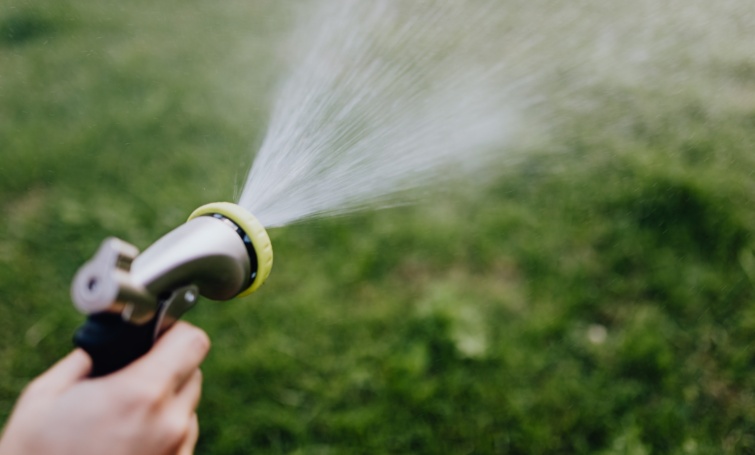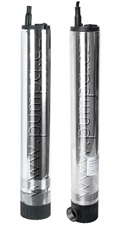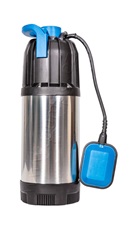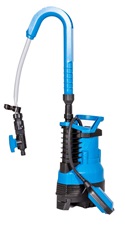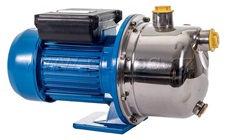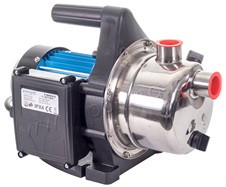How to choose a pump for the garden irrigation
The most common task in the garden is its irrigation, especially in the hot summer months. If you do not have a small front garden that you sprinkle with one watering can, the right pump will save you a ton of hassle. But how to choose such a pump correctly and what to consider when choosing one?
Choosing the right pump starts at the spring, the source of your water for garden irrigation, which can be clean or slightly polluted water. Whether you choose a surface, submersible or drainage pump is also determined by how deep the water is and how far away the water source is.
At all times, choosing the right pump begins with determining the source of water and answering questions:
- what
- from where
- how often,
- and how much water you want to draw.
It makes a difference whether you draw water from a well, from a pond or use rainwater.
Types of pumps suitable for garden irrigation
Submersible pumps
Submersible pumps are partially or
completely immersed in water, and it is characteristic of them that they do not suck the water, but
push it above themselves. They are used for
pumping clean or slightly polluted water from a well, borehole or sump. Thanks to its performance, it is also suitable for
pumping large volumes over long distances, for example for
pumping clean water into irrigation systems from reservoirs and rainwater tanks.
If you need to pump water
over a greater distance, under greater pressure or from a greater depth – for example, from a drilled well – choose a product specifically designed for this purpose, i.e. a
pump for the borehole. This is suitable both for
supplying households with water and for
pumping water into smaller irrigation systems in the garden.
Automatic operation of the pump is usually provided by a built-in intelligent control device, and dirt is picked up by the integrated filter.
Pumps for barrels
Among the submersible pumps you will also find so-called
pumps for barrels designed
for pumping water from shallow depths, most often
rainwater from a barrel. You submerge the pump and a
telescopic tube with a tap for filling watering cans protrudes above the surface, or you connect a hose to the tube with a quick coupling. It is better to place the pump barrel as close as possible to the place that will be irrigated, while the pump should be stored in the barrel on a pedestal (due to possible sediments on the bottom that could damage the pump when sucked in). Most garden owners use barrel pumps with a flow rate of up to 4000 l/h.
Surface pumps and pressure booster pumps
This group of centrifugal pumps
is not installed in water, but outside the water source, when
they can be pumped from virtually all kinds of water sources. However, due to physical limits,
most of all from a depth of 8 meters. Surface pumps are used for pumping
clean to slightly polluted water. For water supply to the object (house, lodge, summer house) or for
automatic water supply (the pump itself turns on, off) you will need a
pressure tank to them (together with the pump and other accessories it works as a pressure booster pump) and a suction basket to the well. It is advisable to choose such pumps that also offer a dry run safety and a pre-filter.
When selecting a pump or a pressure booster pump, consider the following parameters:
- flow rate (pumps with a flow rate of up to 2,000 l/hr should be sufficient for garden watering and similar purposes),
- suction height for surface pumps (maximum 9 meters), maximum immersion depth for submersible pumps (determines the depth at which the pump is still able to operate),
- conveying/delivery height (a pressure of at least 1 bar is required for every 10 metres),
- power/input (depending on the location and method of installation of the pump, choose whether you need a pump with single-phase or three-phase voltage)
- method of operation of the device (pressure switch, control unit or integrated intelligent control device),
- pump noise level (considering its location),
- safety functions and fuses (e.g., check valve), which prevents water from flowing back into the well, protection against dry running.
An important equipment of the pump is the automatic shutdown system, which prevents the possibility of dry running. Most often it is a float switch, but pumps are often sold without one. Also check whether you need to buy other necessary accessories – most often a delivery hose or pipe, installation material for connecting the hose to the pump, connecting fittings, a stand for seating the pump, a lowering rope or protection against dry running.
Concluding hints and tips
- With pumps, it is certainly not true that the higher the output, the better the product. Incorrect choice will bring discomfort in the best case, in the worst case you can very quickly destroy the pump.
- Do not underestimate the availability of pump service, which is a matter of course with professional dealers.
- If the yield of the well or borehole is less than the pump capacity, the installation of a level monitor is necessary.
- To achieve the parameters indicated on the pump, do not reduce the clearance of the delivery pipe or hose.
- Pay attention to the stated parameters of the pumps. Often, only data are given determining the maximum values of the amount of water pumped and the head (Qmax and Hmax).
